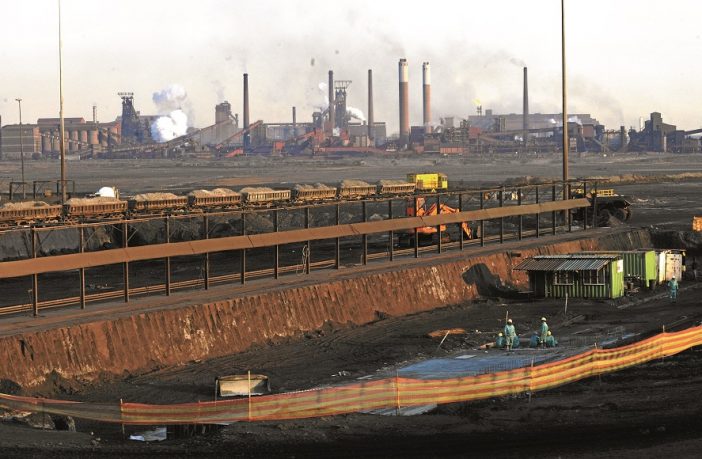- ArcelorMittal South Africa Ltd (AMSA) remains South Africa’s third worst greenhouse gas emitter, responsible for about 3% of the country’s emissions.
- The steelmaker has a long history of toxic air pollution, land and water contamination and a dismal record of engagement with communities and workers affected by the company’s violations.
- VEJA representing communities in the Vaal with support from the Centre for Environmental Rights (CER) will pose questions to the AMSA board and management during the company’s 2022 annual general meeting (AGM) on Thursday 19th May 2022.
While environmental justice groups recognise the publication of AMSA’s first Environmental, Social and Governance (ESG) report as being an important step forward, the report fails to provide sufficient detail on its ability to meaningfully realise key commitments. In particular, the steelmaker’s plans to reduce greenhouse gas emissions by 25% by 2030 and to reach net-zero by 2050 are simply too vague.
The ArcelorMittal Group, based in Luxembourg, has revised its climate commitments in respect of its European operations, making bolder commitments to a 35% emissions intensity reduction by 2030. Here in South Africa, however, AMSA’s climate commitments are lacklustre at best, and the steelmaker has not indicated why it is unable to improve on these commitments. Critically, the company has not indicated how it plans to finance even their mediocre commitments.
Furthermore, while AMSA has said a great deal about the importance of decarbonisation to ensure economic and environmental sustainability, over the last year it has failed to comply with a number of environmental standards and has continued to seek the postponement of compliance with minimum emissions standards for air pollution.
For the fourth year, activists from VEJA and CER lawyers, as registered shareholders of AMSA, will pose questions to the AMSA board and management during the company’s 2022 annual general meeting (AGM).
Community members from Sharpeville and Bophelong had planned to gather outside AMSA’s main plant in Vanderbijlpark to protest AMSA’s pollution in Vanderbijlpark and surrounding areas, and to hand over a memorandum of demands to AMSA management, but another protest is taking place today. An AMSA worker strike led by National Union of MetalWorkers of South Africa (NUMSA) overinadequate wages is now in its ninth day. As a result, communities will have to postpone their protest action.
“Communities affected by AMSA’s pollution continue to struggle to obtain access to information related to AMSA’s operations while the company hides behind outdated COVID mitigation measures as a justification for lack of engagement,” says Samson Mokoena, VEJA coordinator. “Nothing has progressed over the years and AMSA continues to put profits before people and the environment. The company plays dirty tricks to hide information, refusing to meet communities to engage on the ongoing pollution and to rehabilitate its unacceptable underground water pollution and waste disposal sites.” Mokoena added.
Failure to disclose
Beyond the focus on environmental violations and continued lack of community engagement, a central concern for activists remains AMSA’s failure to disclose a detailed strategy to mitigate its climate-related impacts and risks.
“Around the world, carbon intensive companies like AMSA and its Europe-based parent company ArcelorMittal are faced with growing financial, reputational, and physical risks posed by climate change. ArcelorMittal has recognised and embraced new and cleaner technologies in the steel making process and have made revised commitments to improve on its emissions reductions by 2030 but AMSA has only recently published its own commitments, with very little detail on the implementation of these commitments. In addition, AMSA does not have board level governance and accountability structures to ensure an urgent response to managing climate risk,” says Avena Jacklin from groundWork, Friends of the Earth South Africa.
Key Information: Tackling Climate Change: The Role of Green Steel Industry in South Africa
Author: Bryan Groenendaal
















1 Comment
Pingback: Arcelor Mittal South Africa ith the country's third worst greenhouse gas-emitter – Centre for Environmental Rights